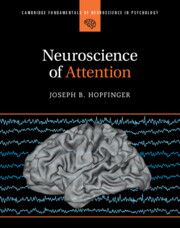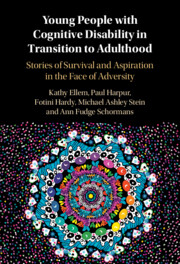Refine search
Actions for selected content:
99 results
The shadow of trauma: impaired mentalization in clinical populations – a systematic review
-
- Journal:
- Psychological Medicine / Volume 55 / 2025
- Published online by Cambridge University Press:
- 08 July 2025, e186
-
- Article
-
- You have access
- Open access
- HTML
- Export citation
Child maltreatment and resilience in adulthood: a systematic review and meta-analysis
-
- Journal:
- Psychological Medicine / Volume 55 / 2025
- Published online by Cambridge University Press:
- 02 June 2025, e163
-
- Article
-
- You have access
- Open access
- HTML
- Export citation
4 - Deficits in Attention
-
- Book:
- Neuroscience of Attention
- Published online:
- 02 May 2025
- Print publication:
- 22 May 2025, pp 91-122
-
- Chapter
- Export citation
Adverse childhood experiences and their differential relationships with transdiagnostic mental health outcomes in young adults
-
- Journal:
- Psychological Medicine / Volume 55 / 2025
- Published online by Cambridge University Press:
- 22 May 2025, e147
-
- Article
-
- You have access
- Open access
- HTML
- Export citation

Neuroscience of Attention
-
- Published online:
- 02 May 2025
- Print publication:
- 22 May 2025
-
- Textbook
- Export citation
Chapter 5 - Safeguarding Children and Its Implications for the Anaesthetist
-
-
- Book:
- Core Topics in Paediatric Anaesthesia
- Published online:
- 06 February 2025
- Print publication:
- 13 February 2025, pp 42-49
-
- Chapter
- Export citation
Chapter 2 - Violence against Young People with Cognitive Disability
-
- Book:
- Young People with Cognitive Disability in Transition to Adulthood
- Published online:
- 06 February 2025
- Print publication:
- 13 February 2025, pp 22-39
-
- Chapter
- Export citation
Chapter 6 - The Many Faces of Violence
-
- Book:
- Young People with Cognitive Disability in Transition to Adulthood
- Published online:
- 06 February 2025
- Print publication:
- 13 February 2025, pp 106-140
-
- Chapter
- Export citation
Chapter 5 - Experiences of Young People with Cognitive Disability
-
- Book:
- Young People with Cognitive Disability in Transition to Adulthood
- Published online:
- 06 February 2025
- Print publication:
- 13 February 2025, pp 77-105
-
- Chapter
- Export citation
Implicit neural sensitivity for negatively valued social and non-social visual scenes in young adults exposed to childhood adversity
-
- Journal:
- Psychological Medicine / Volume 55 / 2025
- Published online by Cambridge University Press:
- 11 February 2025, e37
-
- Article
-
- You have access
- Open access
- HTML
- Export citation

Young People with Cognitive Disability in Transition to Adulthood
- Stories of Survival and Aspiration in the Face of Adversity
-
- Published online:
- 06 February 2025
- Print publication:
- 13 February 2025
Triangulating the associations of different types of childhood adversity and first-episode psychosis with cortical thickness across brain regions
-
- Journal:
- Psychological Medicine / Volume 54 / Issue 16 / December 2024
- Published online by Cambridge University Press:
- 16 December 2024, pp. 4561-4574
-
- Article
-
- You have access
- Open access
- HTML
- Export citation
Neglect and adolescent internalizing mental health: Testing competing longitudinal hypotheses
-
- Journal:
- Development and Psychopathology / Volume 37 / Issue 4 / October 2025
- Published online by Cambridge University Press:
- 12 December 2024, pp. 2161-2171
-
- Article
-
- You have access
- Open access
- HTML
- Export citation
Chapter 5 - Notification of Deaths to the Coroner and the Decision to Investigate
-
-
- Book:
- A Clinician's Brief Guide to the Coroner's Court and Inquests
- Published online:
- 14 November 2024
- Print publication:
- 21 November 2024, pp 19-26
-
- Chapter
- Export citation
A longitudinal birth cohort study of child maltreatment and mental disorders using linked statewide child protection and administrative health data for 83,050 Queensland residents from 1983 to 2014
-
- Journal:
- Epidemiology and Psychiatric Sciences / Volume 33 / 2024
- Published online by Cambridge University Press:
- 20 November 2024, e69
-
- Article
-
- You have access
- Open access
- HTML
- Export citation
Child maltreatment and executive function development throughout adolescence and into young adulthood
-
- Journal:
- Development and Psychopathology / Volume 37 / Issue 4 / October 2025
- Published online by Cambridge University Press:
- 28 October 2024, pp. 1889-1902
-
- Article
-
- You have access
- Open access
- HTML
- Export citation
A role for adverse childhood experiences and depression in preeclampsia
-
- Journal:
- Journal of Clinical and Translational Science / Volume 8 / Issue 1 / 2024
- Published online by Cambridge University Press:
- 12 January 2024, e25
-
- Article
-
- You have access
- Open access
- HTML
- Export citation
88 REASmash: A serious game in immersive virtual reality for the evaluation of spatial and non-spatial attention impairments in post-stroke individuals.
-
- Journal:
- Journal of the International Neuropsychological Society / Volume 29 / Issue s1 / November 2023
- Published online by Cambridge University Press:
- 21 December 2023, pp. 490-491
-
- Article
-
- You have access
- Export citation
39 Does Pseudoneglect Modifies The Visuospatial After-Effects Of Vertical Prism Adaptation?
-
- Journal:
- Journal of the International Neuropsychological Society / Volume 29 / Issue s1 / November 2023
- Published online by Cambridge University Press:
- 21 December 2023, pp. 913-914
-
- Article
-
- You have access
- Export citation
Chapter 4 - Parental Emotion Regulation: The Role of Parents’ Own Childhood Maltreatment
- from Part II - Influence of Parents’ Emotion Regulation on Parenting
-
-
- Book:
- Emotion Regulation and Parenting
- Published online:
- 05 January 2024
- Print publication:
- 30 November 2023, pp 82-100
-
- Chapter
-
- You have access
- Open access
- HTML
- Export citation
